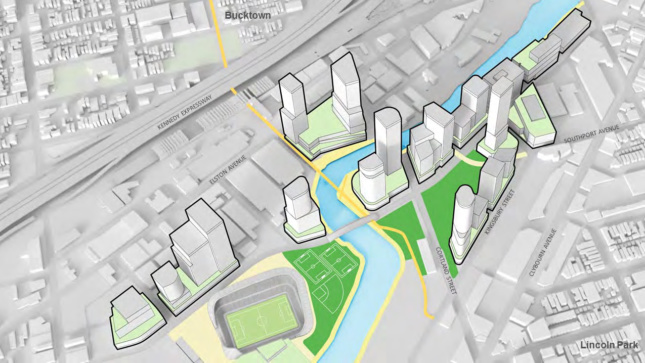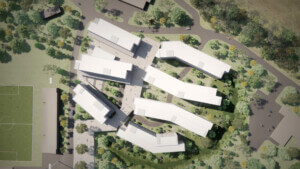Chicago’s unbuilt Lincoln Yards mega-development will no longer include a soccer stadium and entertainment district. Under pressure from constituents, Alderman Brian Hopkins of Chicago’s 2nd Ward has rejected developer Sterling Bay’s proposal to include a 20,000 seat United Soccer League stadium, as well as a series of large Live Nation–run entertainment venues. Live Nation will divest itself from the development, as will the United Soccer League and Chicago Cubs owner Tom Ricketts, who is the majority owner of a Chicago franchise. Alderman Hopkins has called for Sterling Bay to retool the project to bring more open space to the development in place of the stadium and venues, and bring a variety of smaller, scattered venues through the site, as well as restaurants and theaters. The public has yet to hear this proposal, despite Lincoln Yards’ presence on the January 24 Chicago Planning Commission meeting agenda and confirmation from Mayor Rahm Emanuel that the project will “move forward on a balanced path,” Crain’s Chicago Business reported.
Expected to cost upwards of $6 million dollars, Lincoln Yards will transform nearly 55 acres of former industrial land along the Chicago River into a dense cluster of retail, office, and residential development, delivering a planned 5,000 residential units, 500 hotel rooms, a mile of new riverwalk, and an extension to the 606. Designed by SOM, the project is slated to include multiple skyscrapers reaching a height of up to 650 feet, making the overall height of the development as tall as some structures in the Loop. This isn’t the first time Sterling Bay has had to trim its plans for Lincoln Yards; community input dictated a decrease in the maximum height of the high-rise towers and an increase in publicly-accessible open space in response to a community meeting in November.

The move to ax Live Nation from the plan had advocates of The Hideout feeling cautiously optimistic as the Live Nation–run spaces could have threatened the independent venue and provided competition, despite Sterling Bay’s commitment to keeping The Hideout a component of the Lincoln Yards plan. While Sterling Bay has agreed to provide opportunities for independent music operators to participate, concerns remain.
The City of Chicago introduced the Cortland/Chicago River Tax Increment Financing (TIF) district in November, which encompasses the entirety of the Lincoln Yards site. As Sterling Bay would be the primary property owner, it would be allowed to pay for the project and its future improvements through TIF funds, raising questions of the appropriateness of the new district, as TIF is intended to revive struggling neighborhoods. Members of the City Council Progressive Caucus have been advocating for a measure that would allow the city to provide TIF funds only to projects that cannot be completed without them.
Sterling Bay has also yet to address how many of the residential units will be considered affordable, or the demand the project will place on new schools. While some concerns regarding infrastructure and transportation have been addressed, area residents remain concerned about traffic and congestion, as well as the availability and equitability of public transportation.











